背景
Prosthetics and orthotics are revolutionary medical technologies that have been transforming the lives of people with physical disabilities. Artificial limbs, braces and other supportive devices have helped individuals regain lost mobility and independence. Recent progress in technology has allowed for the development of more sophisticated devices, such as bionic limbs and exoskeletons.
However, despite these advances, the availability of high-quality components and materials remains a challenge for the industry. This limits the accessibility and affordability of prosthetic and orthotic devices, preventing many individuals from benefiting from these life-changing technologies.
Revival Bionics is an innovative company founded in 2021 and its CEO, Guillaume Baniel has a vision to improve the lives of people with disabilities. The commitment of dedicated research and development teams, such as Revival Bionics, to overcome the limitations and improve the lives of people with disabilities gives hope for a brighter future.
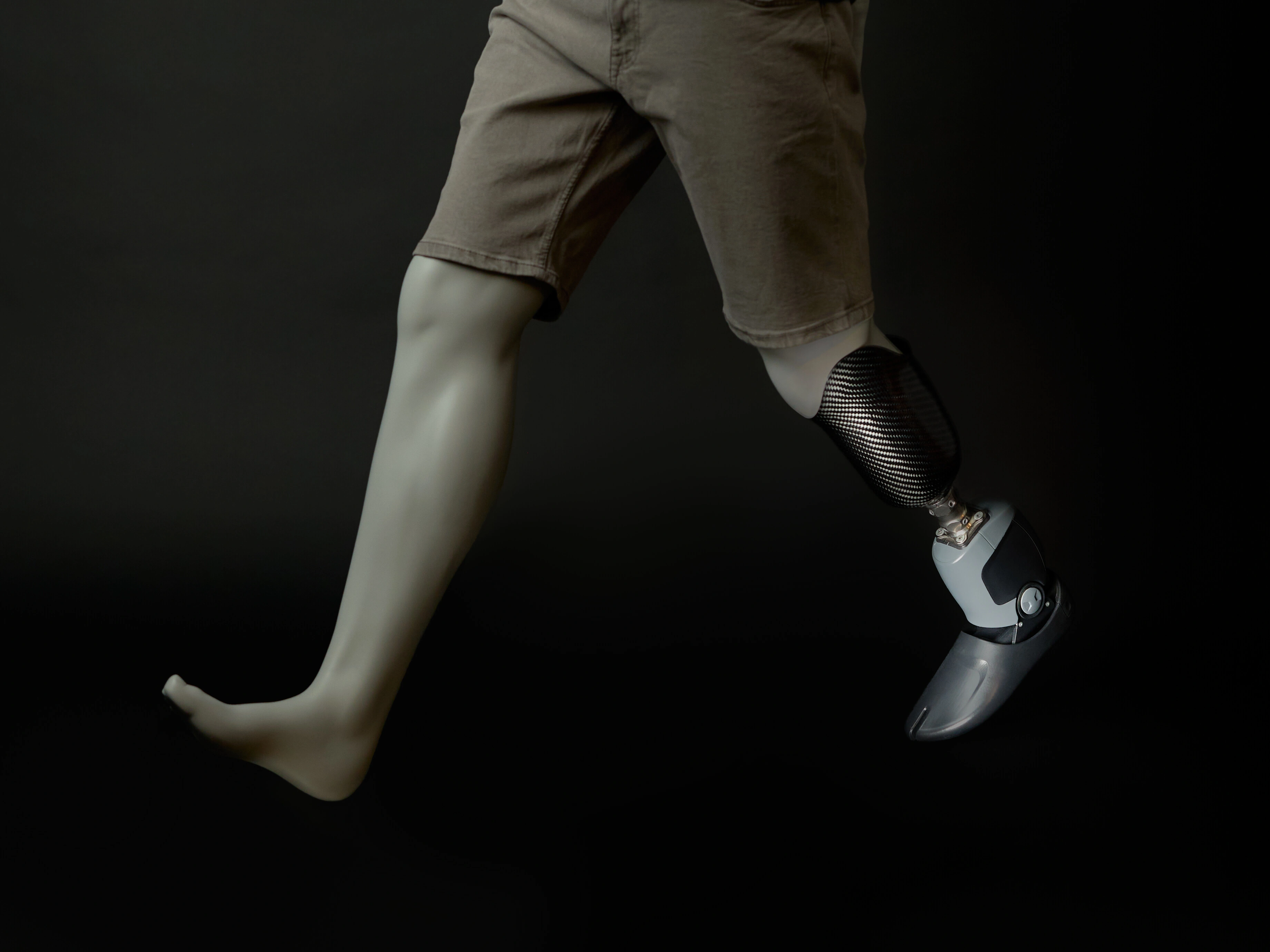
挑戰
In 2018, Baniel was struck by disability and realised that no existing device could fully improve his condition. As an engineer, he developed a prototype of a propulsion orthosis that compensated for the paralysis of his lower left leg. After positive results, he decided to create a startup and focus on helping amputees.
Today, Revival Bionics is at the forefront of the industry, pushing the boundaries of what is possible with bionics and giving hope to people with disabilities around the world. The company’s mission is to fully compensate for disabilities. For its first product – a powered foot prosthesis for below-knee amputations – the company sought the best-performing components in the world. RLS is part of the adventure and with its encoders ensures the controllability of the motor.
Bionic prostheses operate at the limits of what is feasible in robotics and mechatronics. They are designed to imitate and replace human limbs, i.e. they must withstand the forces that occur during natural movements and actions. This includes activities such as walking, running, lifting objects and much more. The materials and components used in these prostheses are pushed to their limits due to the high forces involved, which can lead to wear over time. They require high performance at all stages, which is a crucial aspect of their design and construction.
Bionic prostheses are like musical instruments designed for virtuosos. They are finely tuned and calibrated to produce the most beautiful and expressive feelings, but they require a fine touch and years of practice to master. Revival Bionics has begun research on a propulsive foot prosthesis.
For individuals with below-knee amputations, it can be a challenge to reproduce the push-off movement when walking due to the loss of the ankle joint and calf muscles. A propulsive foot prosthesis has been developed to improve the forward propulsion or push-off phase of the gait cycle for individuals with below-knee amputations.
In a natural walking or running movement, the push-off phase occurs when the leading foot touches the ground, at which point the trailing foot propels the body forward. This phase is essential for maintaining a smooth and efficient walking pattern.
Revival Bionics needed an efficient, robust, industrial-grade, compact sensor that could be integrated into a demonstrator and work well immediately.
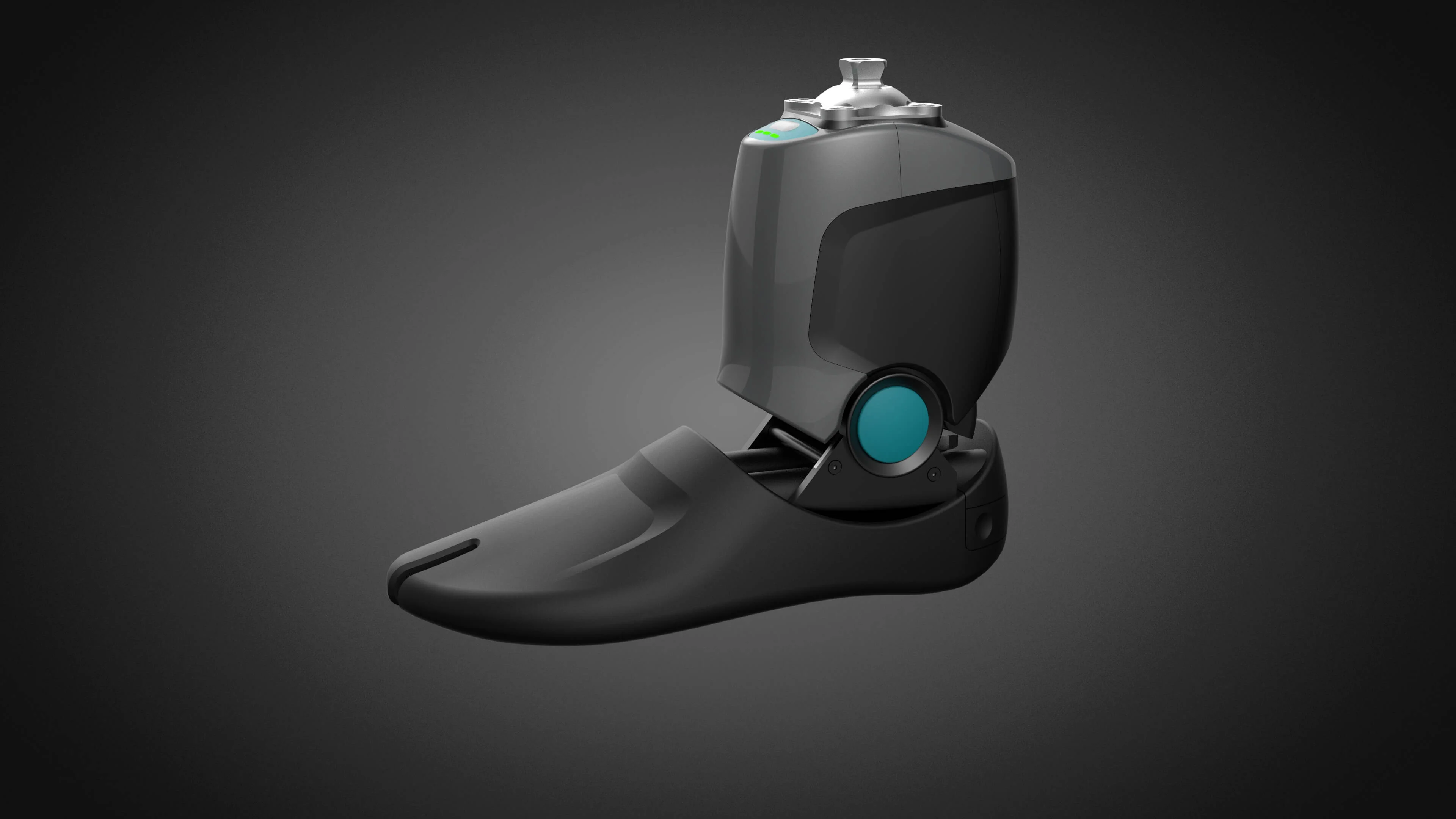
解決方案
The use of magnetic encoders in a prosthesis is essential to ensure patient safety, provide a smooth feel to the foot and enable a highly dynamic motion that moves the patient forward when walking. The motor, which is controlled with a high degree of precision, results in a smoother and more natural movement of the prosthesis. In addition, the magnetic encoder allows the prosthesis to respond quickly and precisely to changes in the patient’s gait, walking speed and activity.
RLS magnetic encoders are embedded in the tibial part of the prosthesis in front of the Revival Bionics motor axis. This ensures efficient control of the motor and enables smooth operation of the entire prosthesis.
Revival Bionics aims to generalise the use of the bionic foot by providing the first silent, design-oriented, autonomous and comfortable device. Due to the high complexity of such devices, there is only one bionic prosthesis available today. Although it is very advanced, it has its limitations. It emits a high-pitched noise with every step and is also quite rigid, which can cause discomfort.
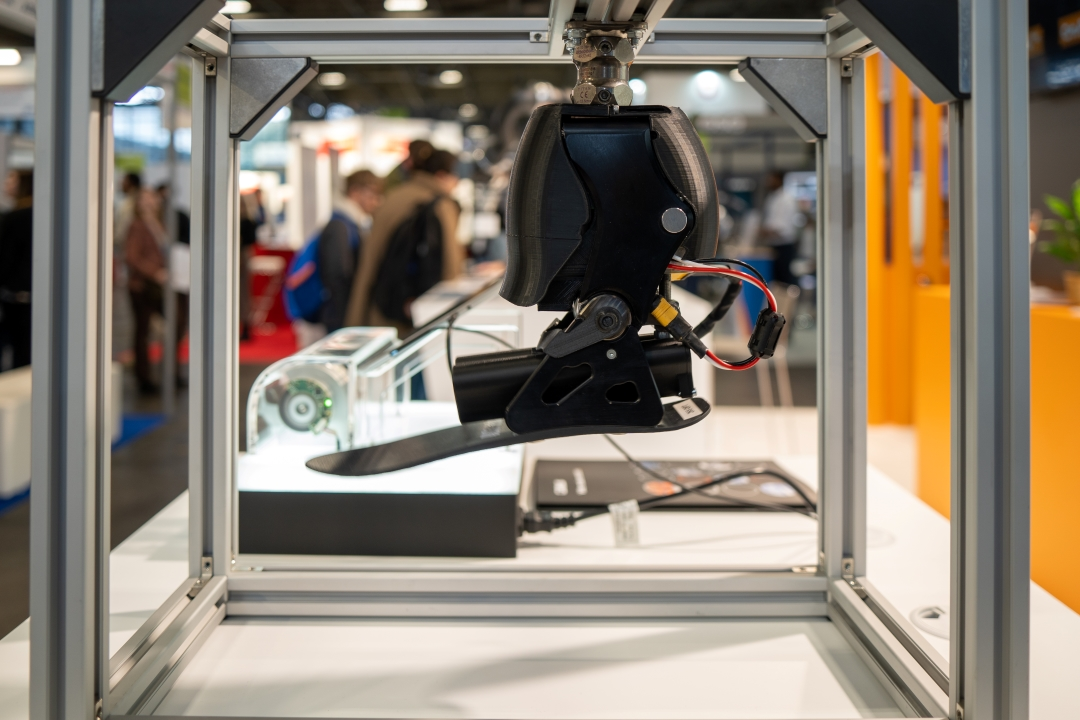
OnAxis RMB20 magnetic encoder module
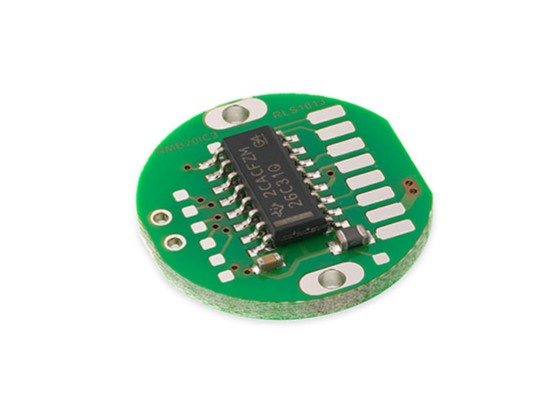
The RMB20 magnetic encoder module was chosen for this application because it offers a miniature design, high resolution and industrial-grade outputs. The encoder module consists of a magnetic actuator and a separate sensor board. The rotation of the magnetic actuator is sensed by a custom encoder chip on the sensor board and processed to give the required output format.
The RMB20 magnetic encoder module provides reliable position and speed feedback to the control system. This feedback allows the control system to adjust the operation and movements of the motor more accurately, minimising vibrations and ensuring smoother movement. This can help to reduce noise during operation of the prosthesis.
RLS magnetic encoders are known for their small, compact design, which means they can be easily integrated into devices without taking up too much space. They are designed to withstand harsh environments and high wear. This makes them ideal for applications where space is limited and where reliability and durability are crucial, such as in a prosthesis.
結果
RLS magnetic encoders enable precise measurement and monitoring of movement, which in turn ensures that the prosthesis works in a safe and controlled manner. Secondly, it is important for the patient’s comfort and overall satisfaction with the prosthesis. This requires precise control of the motor that drives the prosthesis.
The magnetic encoders from RLS were chosen because they fit well with the specific requirements of the prosthetic foot. They were evaluated for ease of integration, cost efficiency and compatibility with other components of the system.
Revival Bionics was able to integrate the sensor quickly and seamlessly into the prosthetic foot without any problems. The high-quality documentation from RLS was also very beneficial and allowed them to work independently and efficiently. This saved time and resources and helped to ensure that the project was completed on time. The fact that a professional prosthetist compared their first prototype to the best in the field is truly remarkable and inspiring. It emphasises their commitment to pushing the boundaries of bionics and creating prosthetic solutions that are at the forefront of innovation and technology.
“Would you have thought that when I saw your first prototype, I would compare it to the best in the business, to players who have been around for more than 100 years? Amazing.” Jerome Lamorere, Vice-president of the Prosthetist Union comments.
Future goals
Revival Bionics has improved its prosthetic foot demonstrator to the point where it is now ready for human trials, and is looking forward to discussions with the French National Institution of Invalids and the French Training Hospital of the Armies. The company will continue its research and development efforts to refine and improve the design of the prosthetic foot based on feedback from human trials and collaboration with healthcare providers.
They see opportunities to expand into other areas of bionics and develop other products that can provide mobility and functionality for people with disabilities. Their goal is to positively impact the lives of people with disabilities by providing them with innovative bionic technologies that enable them to live more independent and active lives. They are excited about the future and look forward to continuing their work in this important and growing field.
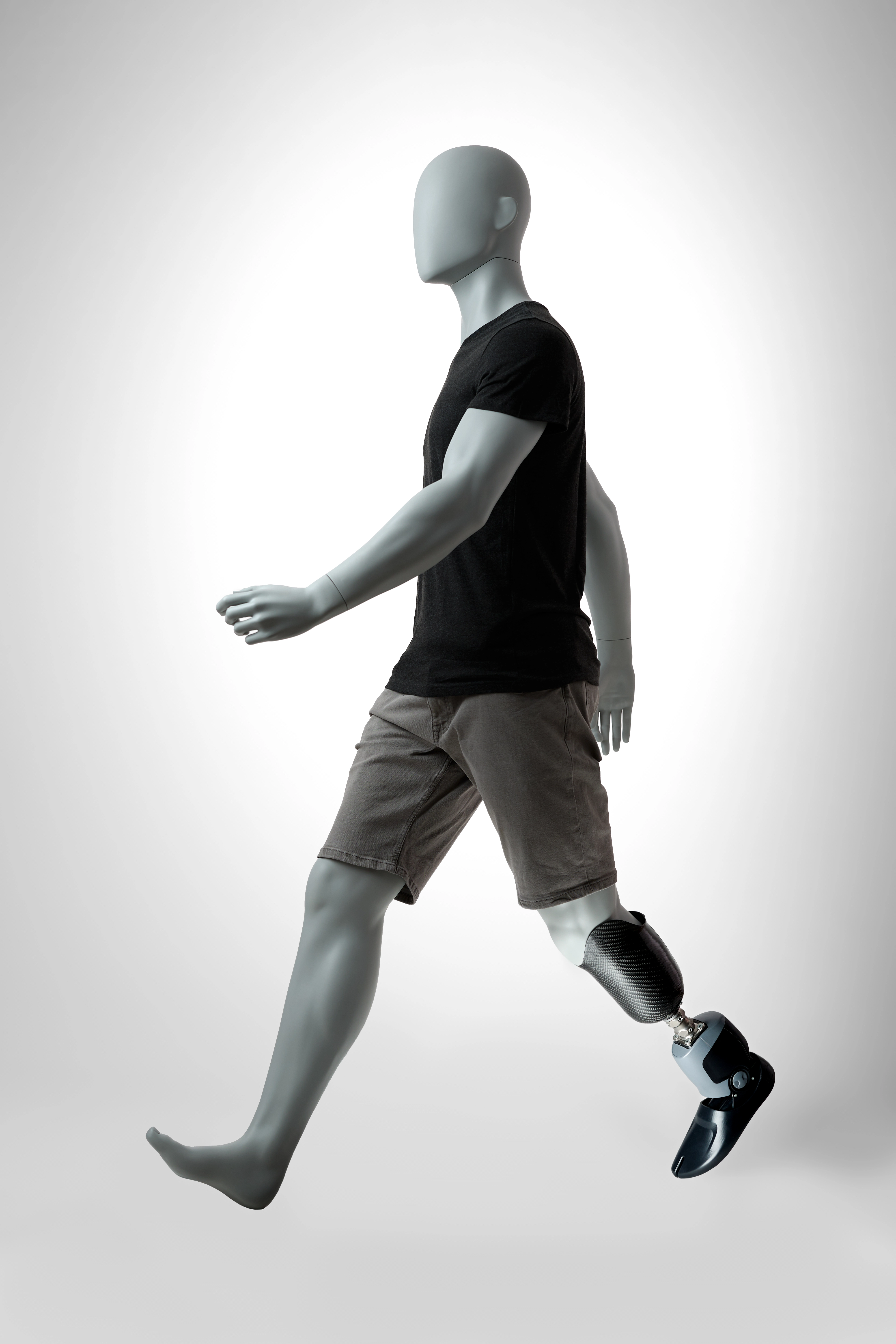
“Overall, our experience of working with RLS was extremely positive, with a clear focus on customer service, ease of use and efficiency. The fact that there were no issues with the integration of the sensor shows that RLS magnetic encoders are designed with ease of use and integration in mind.” says Guillaume Baniel, CEO & CTO of Revival Bionics.
About Revival Bionics
Revival Bionics develops cutting-edge technologies in biomechatronics to reproduce walking and fully compensate for the handicap of lower limb amputees or paralyzed people.
For more information about Revival Bionics visit: www.revivalbionics.com

